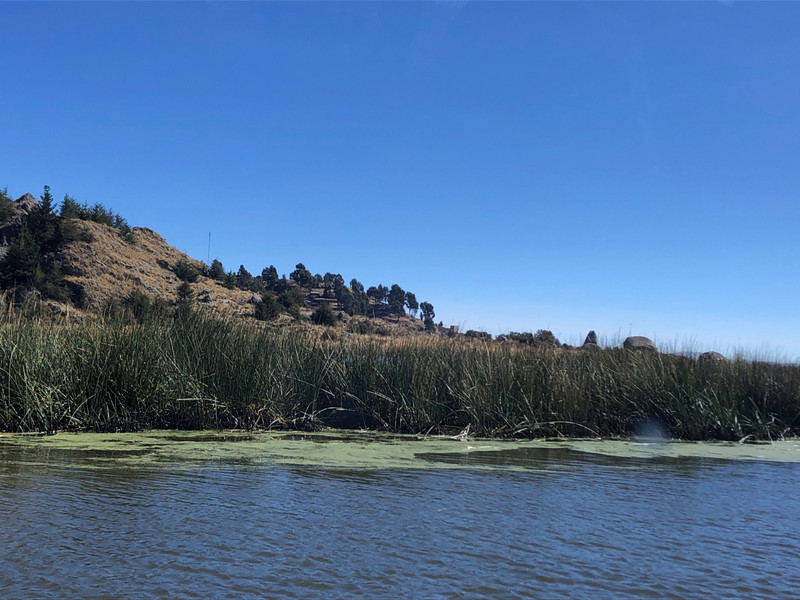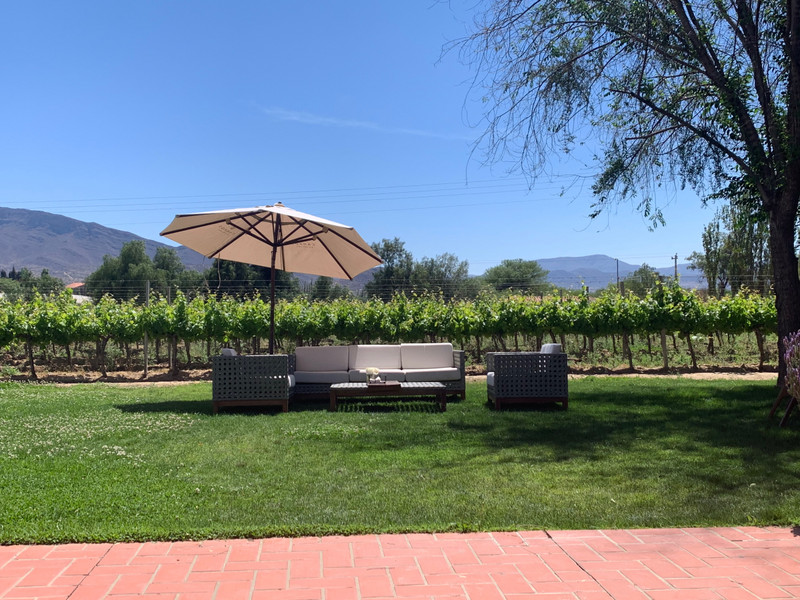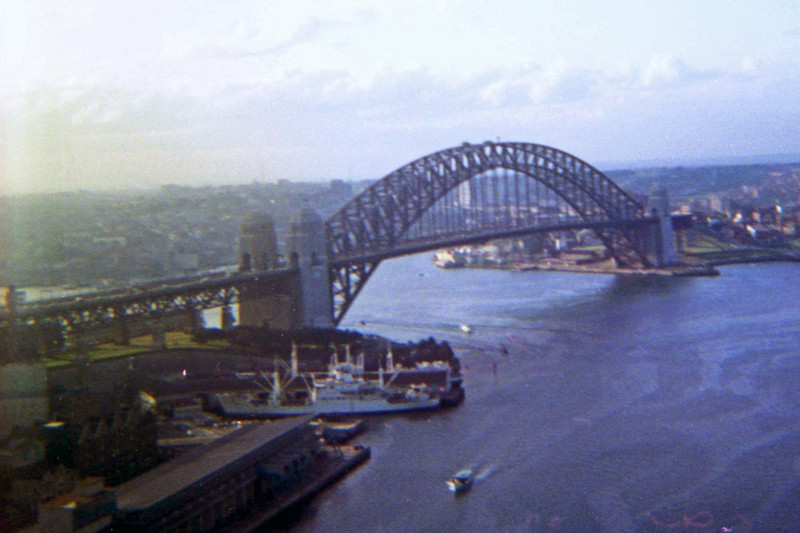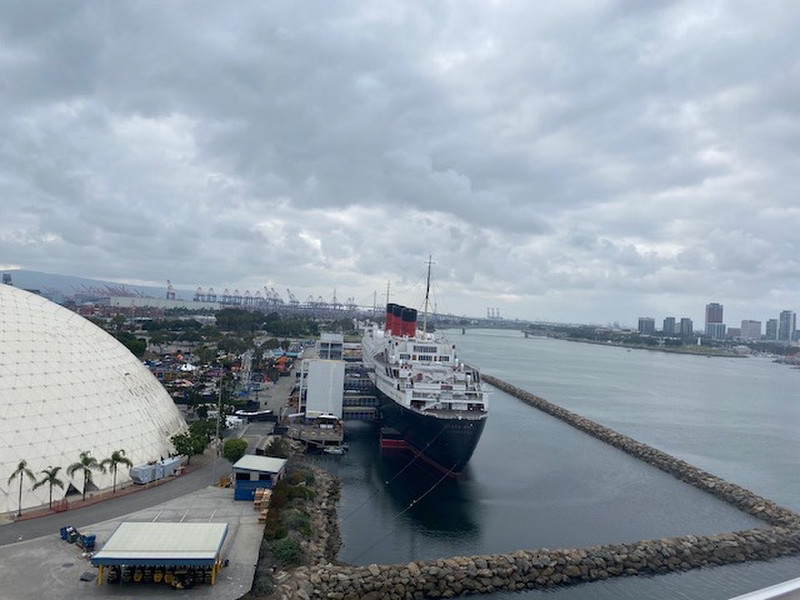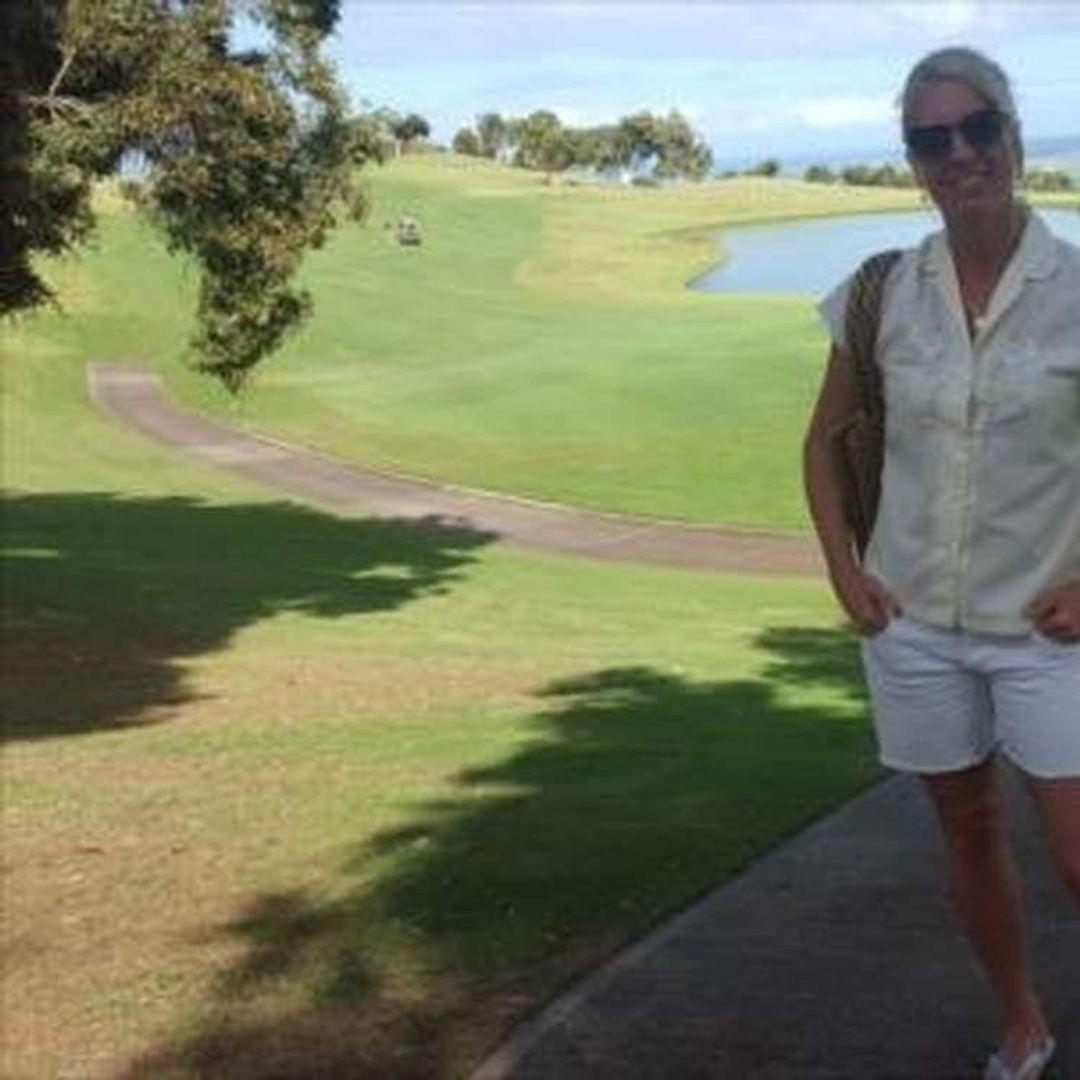After breakfast, and full of anticipation, we boarded the boat that would take us to the Uros Islands on Lake Titicaca. An excursion that did not disappoint.
Although the inhabitants of these islands still can be said to live in fairly primitive conditions, they have savvy enough to have a very good organization of how to distribute the tourists around The individual islands construction and maintenance are the concern and responsibility of all who live on that island, so I can see how they have used the same principles to divide what must be a big source of amongst the entire community.
Upon officially entering the Uros District, our boat captain was instructed about which island we could visit. It turned out to be the Beautiful Rainbow Island, home to four families.
We were eagerly received, and given an explanation about the construction of the floating islands, which take around a year to build and last between years. There are decisive guidelines about the harvesting of the reeds that are used in every aspect of their life so conserving them is of the utmost importance, but their demonstrations were cute and full of
Afterwards came our exploration of the island, with members of one family taking a couple of us under their wind to show us around their huts and goods. They had plenty of choices for souvenirs. I bought a pretty embroidered tapestry with a ducks and fish design that Im planning to find a place for on my wall. I like the rustic design, which seemed unique to their and the colors are rich and full.
After listening to a couple of their traditional songs, we reciprocated by a rendition of Twinkle Twinkle Listen Star. I kid you not.
Finally, the opportunity came to board one of their reed boats to be ferried to the main island which even has a caf for those who wanted to purchase a snack, or a coffee, etc.
Naturally, I couldnt pass the photo op of pretending to be rowing the boat. In truth, although I saw another boat being rowed manually, ours was just being steered from the front and pushed from behind by a more modern motorized fishing boat.
There were antenna receivers for TV watching, and solar panels to provide power. Im glad they can enjoy those amenities. I am so grateful that they have not given up their traditions, and that I was able to see firsthand, even for a short moment, a way of life so unique and traditional.
Overall, I loved the feel of walking on a floating island, the colorful dresses, and the friendliness of the people. It was the most fun and unique of all the places we visited.
Back at the hotel, we soon boarded our transportation for a trip to the historic center of Puno, and the inevitable Plaza Mayor. Lunch was on our own, which provided a good opportunity to do a little exploring.
Although I was spared the worse side effects of altitude sickness, I was lacking in energy, so I accepted the first suggestion for a restaurant and decided to check out what a pizza in Peru was like. It turned out to be a little bland. I realized later on that their cheeses seem to be very mild. Some added salt greatly improved the flavor. I was also misled by the name of chicken
chicharrones on the Menu. I truly thought it was chicken cracklings, but it turned out to be your basic chicken nuggets.
After some time to explore along the main street and the plaza, we departed for another highly anticipated excursion to nearby Sillustani, a cemetery on the shores of Lake Umavo. The tombs, built above ground in structures, are called chullpas and housed the remains family groups of the Aymara elite of the immediate and Inca period.
Since I was being challenged by the lack of oxygen, I was dismayed to see that the cemetery was at the top of a hill and accessible by a ramp that circled the hill, but frequent stops by our guide for explanations provided the necessary recovery time to be able to make it to the top without much trauma.
